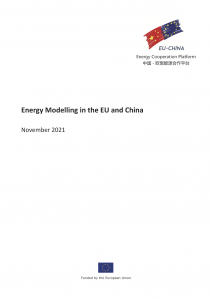
This report is about energy system modelling in the EU and China, under the auspices of the EU-China Energy Cooperation Platform (ECECP).
The capability requirements for energy system models have evolved during the last few decades. New challenges have arisen with the implementation of high shares
of renewable energy sources (RES). The climate goals of the Paris Agreement and national GHG emission reduction strategies involve a restructuring of national energy systems. Adequate and appropriate models are required in order that these climate goals can be achieved.
The main objectives of the study are to describe the challenges and caveats relating to current modelling practices, and to provide recommendations for future energy system modelling in China and the EU. Improved models will pave the way for the integration of more renewables and other emerging technologies into energy systems, thereby reducing climate gas emissions, advancing the transition to clean energy and combating climate change.
This report was prepared by:
Peter Børre Eriksen, Lars Møllenbach Bregnbæk, Janos Hethey and Lars Pauli Bornak, Ea Energy Analyses Shi Jingli, Energy Research Institute of the NDRC (ERI)
Dai Hongcai, State Grid Energy Research Institute (SGERI)
Zhang Lin and Lei Xiaomeng, China Electricity Council (CEC)
with contributions and supports from the following researchers:
Han Xue and Hui Jingxuan, ERI
Zhang Ning, Jian Yongfang, and Li Jiangtao, SGERI Dong Bo, Li Yi, Ye Jing, and Wu Liqiang, CEC
English version – PDF (6.5 MB), Kindle (mobi), eBook (epub)